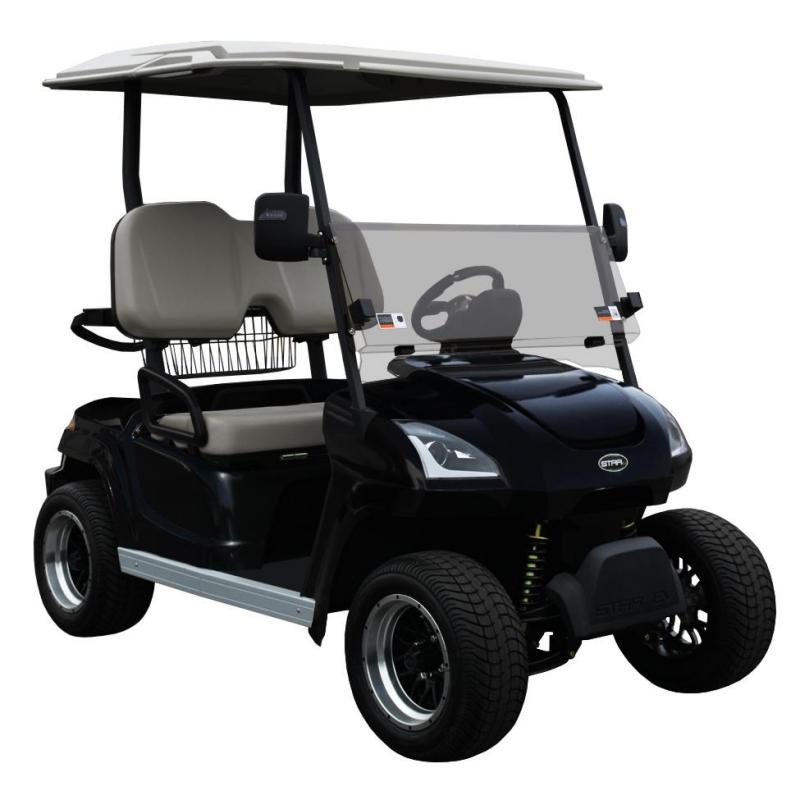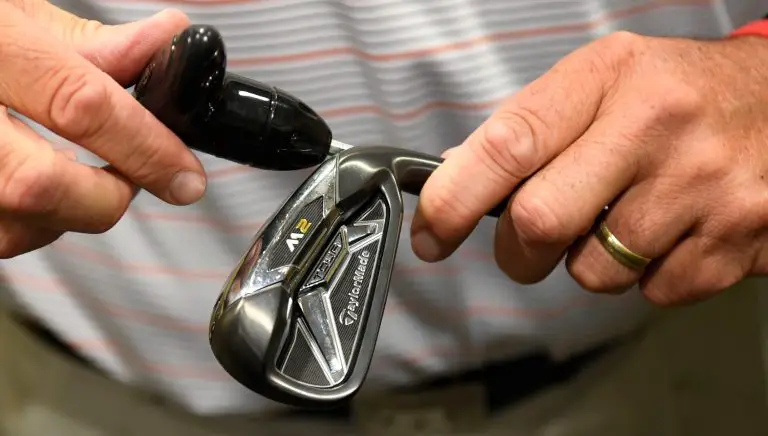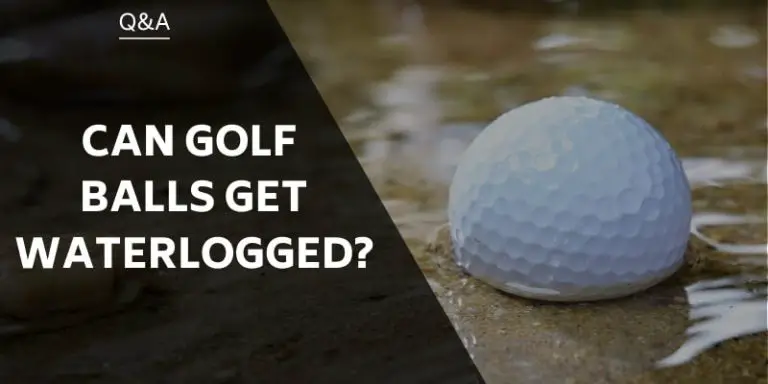Should Golf Cart Wires Get Hot
When it comes to golf cart maintenance and safety, understanding the temperature of your golf cart’s wires is essential. It’s not uncommon for wires to generate heat during operation, but knowing whether the wire temperature is within acceptable limits is crucial for identifying potential issues and ensuring a safe and reliable electrical system.
In this comprehensive guide, we will delve into the topic of golf cart wire temperature. We’ll explore the factors that contribute to wire heating, the potential risks associated with excessive heat, and the best practices for managing wire temperature effectively. Whether you’re a golf cart owner or a golf course operator, this guide will provide valuable insights to help you make informed decisions about wire temperature and ensure the optimal performance and safety of your golf cart.
We’ll address common questions, such as the acceptable temperature range for golf cart wires, the impact of wire temperature on performance and safety, and the preventive measures you can take to manage wire temperature effectively. From understanding the causes of excessive heat in wires to identifying signs of wire heating issues, this guide will equip you with the knowledge and tools to maintain a reliable and safe electrical system in your golf cart.
So, if you’re ready to dive into the world of golf cart wire temperature and gain a deeper understanding of this important aspect of maintenance, let’s get started. Together, we’ll explore how to ensure optimal wire temperature and keep your golf cart running smoothly on the fairways.

Why do golf cart wires sometimes get hot?
It’s important to understand the underlying reasons why golf cart wires can get hot during operation. This knowledge will help you assess the situation and take appropriate actions to maintain the integrity of your electrical system. Let’s explore the primary factors that contribute to wire temperature.
Current flow and resistance
Current flow and resistance are key factors that influence wire temperature. When a golf cart is in use, electrical current flows through the wires to power various components, such as the motor, lights, and accessories. As current flows through a wire, resistance can cause a voltage drop, resulting in the generation of heat. Higher currents or increased resistance can lead to hotter wires.
Electrical load and wiring capacity
The electrical load placed on the golf cart’s electrical system affects wire temperature. Different accessories and components draw varying amounts of current, and the cumulative load can impact wire temperature. Additionally, the wiring capacity of the golf cart, including the wire gauge and the design of the electrical system, plays a crucial role in managing heat dissipation.
Loose connections and poor insulation
Loose connections and poor insulation can contribute to wire heating issues. Loose connections create resistance and can lead to arcing, which generates heat. Similarly, damaged or inadequate insulation can cause heat buildup by reducing the wire’s ability to dissipate heat effectively.
Is it normal for golf cart wires to get hot during operation?
Understanding whether it is normal for golf cart wires to get hot is crucial for determining if your wire temperatures are within acceptable limits. Let’s explore the factors that influence wire temperature and establish a baseline for what can be considered normal during golf cart operation.
Evaluating wire temperature under normal operating conditions
Wire temperature can vary based on factors such as electrical load, wire gauge, and ambient temperature. While some heating is expected due to the aforementioned factors, excessively hot wires can indicate potential issues that need attention. By understanding what is considered normal, you can assess your golf cart’s wire temperature more accurately.
Acceptable temperature range for golf cart wires
Determining an exact temperature range for golf cart wires can be challenging due to variations in cart models and wiring systems. However, as a general guideline, wire temperatures between 100°F and 140°F (37°C and 60°C) are often considered acceptable during normal operation. Temperatures beyond this range may indicate underlying problems.
Factors that can influence wire temperature
Several factors can influence wire temperature, including the electrical load, wire gauge, insulation quality, ambient temperature, and the overall condition of the electrical system. It’s important to consider these factors collectively when assessing wire temperature to determine if they are within acceptable limits.
What are the potential risks and hazards of hot golf cart wires?
Hot golf cart wires can pose various risks and hazards that need to be addressed promptly. Understanding these potential issues will help you take proactive measures to maintain the safety and longevity of your golf cart’s electrical system.
Fire hazards and electrical damage
Excessively hot wires can increase the risk of electrical fires. The heat generated can damage insulation, melt surrounding components, and potentially ignite flammable materials. Addressing hot wire issues promptly is crucial to mitigate the risk of fire and prevent costly damage to your golf cart.
Impact on battery performance and lifespan
Hot wires can impact the performance and lifespan of your golf cart’s batteries. Excessive heat can accelerate the aging process of batteries, leading to reduced capacity and overall diminished performance. Proper wire temperature management is essential for ensuring the longevity and optimal performance of your batteries.
Safety concerns for passengers and nearby components
Hot wires can create safety concerns for passengers and nearby components. Direct contact with hot wires can cause burns or electrical shocks. Additionally, nearby components and accessories may be sensitive to heat and could experience damage or malfunction if exposed to excessive temperatures.
How can I identify if golf cart wires are excessively hot?
It’s important to be able to identify if your golf cart’s wires are excessively hot. Regular monitoring and assessment of wire temperature can help you detect potential issues early on and take appropriate action. Let’s explore some methods for identifying excessive wire heat.
Visual inspection and touch test
Visual inspection of the wires can provide initial insights into their temperature. Look for discoloration, signs of melting insulation, or components near the wires that show heat-related damage. Additionally, you can perform a touch test by gently placing your hand near the wires (without direct contact) to assess if they feel excessively hot.
Using an infrared thermometer
For a more accurate assessment of wire temperature, you can use an infrared thermometer. These devices allow non-contact measurement of surface temperatures and provide precise readings. Point the thermometer towards the wires of interest, following the manufacturer’s instructions, and note the recorded temperatures.
Monitoring temperature changes during operation
Observing temperature changes during the operation of your golf cart can provide valuable information. Pay attention to any significant increases in wire temperature when certain components or accessories are in use. Documenting these changes can help identify patterns and potential issues that require attention.
What are the common causes of excessive heat in golf cart wires?
Excessive heat in golf cart wires can have various underlying causes. Identifying these causes will help you address the root issues and prevent further wire heating problems. Let’s explore some common factors that can contribute to excessive heat in golf cart wires.
Overloading the electrical system
Overloading the electrical system by drawing excessive current can cause wires to heat up. Adding power-hungry accessories or components without considering the electrical capacity of the cart can strain the wires and lead to overheating. Properly managing the electrical load is crucial to prevent wire heating issues.
Damaged or corroded wires
Wires that are damaged, corroded, or compromised in any way can experience increased resistance, leading to excessive heat generation. Exposure to moisture, physical damage, or age-related wear and tear can contribute to wire deterioration. Regular inspections and addressing any wire damage promptly are essential for preventing overheating.
Faulty components or wiring connections
Faulty components, such as controllers or solenoids, can cause electrical issues that result in wire overheating. Similarly, loose or poor wiring connections can introduce resistance, leading to increased heat generation. Regularly inspecting and maintaining the electrical components and connections will help prevent these issues.
How can I prevent or mitigate excessive heat in golf cart wires?
Preventing or mitigating excessive heat in golf cart wires is crucial for maintaining the safety and optimal performance of your electrical system. Implementing preventive measures and following best practices can help you manage wire temperature effectively. Let’s explore some key strategies:
Proper electrical system maintenance
Regular maintenance of your golf cart’s electrical system is essential for preventing wire heating issues. Here are some maintenance practices to consider:
- Cleanliness: Keep the wiring and electrical components clean from dirt, debris, and corrosion. Regularly inspect and clean the battery terminals, connectors, and wiring harnesses to ensure proper conductivity and minimize resistance.
- Tight connections: Check all electrical connections regularly to ensure they are tight and secure. Loose connections can create resistance and lead to heat generation. If you notice any loose connections, tighten them appropriately or seek professional assistance if needed.
- Insulation integrity: Inspect the insulation of your wires for any signs of damage or wear. Damaged insulation can contribute to heat buildup. Replace any wires with compromised insulation and use protective measures such as wire loom or conduit to prevent future damage.
Regular wire inspections and repairs
Routine inspections of your golf cart’s wires are crucial for identifying potential issues early on and taking appropriate action. Consider the following practices:
- Visual inspections: Regularly inspect the wires for any signs of discoloration, melting insulation, or physical damage. Address any visible issues promptly to prevent further damage and overheating.
- Wire resistance testing: Perform periodic wire resistance testing using a multimeter to identify any abnormal resistance levels. Higher-than-normal resistance can indicate wire heating problems. Consult the manufacturer’s specifications or seek professional assistance for appropriate resistance values.
- Professional assistance: If you’re unsure about conducting inspections or repairs yourself, it’s advisable to seek professional assistance from a qualified technician. They can perform comprehensive inspections, identify potential issues, and conduct necessary repairs or replacements.
Ensuring proper wire gauge and capacity
Using the appropriate wire gauge and ensuring the electrical system’s capacity is essential for managing wire temperature. Consider the following factors:
- Wire gauge: Ensure that the wire gauge used in your golf cart is suitable for the electrical load it carries. Using wires with insufficient gauge can lead to increased resistance and heat generation. Refer to the manufacturer’s guidelines or consult a professional to determine the appropriate wire gauge for your specific electrical system.
- Controller compatibility: If you’re upgrading or replacing components such as controllers or solenoids, ensure they are compatible with your golf cart’s electrical system. Incompatible components can create electrical imbalances and contribute to wire heating issues.
- Battery capacity: Ensure that your golf cart’s batteries are appropriately sized and have sufficient capacity to handle the electrical load. Insufficient battery capacity can lead to excessive discharge and strain on the wiring system, resulting in increased heat generation.
By implementing these preventive measures and following best practices for wire maintenance, you can minimize the risk of excessive heat in your golf cart’s wires and maintain a safe and efficient electrical system.
Should I seek professional assistance for hot golf cart wires?
When dealing with hot golf cart wires, it’s important to consider the complexity of electrical systems and the potential risks involved. Seeking professional assistance can provide expert knowledge and ensure the safety and proper resolution of any issues. Here’s what you should know:
When to consult a qualified technician
While some maintenance tasks can be performed by golf cart owners, there are situations where professional assistance is recommended. Consider the following scenarios:
- Complex issues: If you’re experiencing persistent or recurring wire heating issues despite your own efforts to address them, it may indicate a more complex underlying problem. A qualified technician can diagnose the root cause and provide appropriate solutions.
- Limited expertise: If you’re not familiar with electrical systems or lack experience in troubleshooting and repairing golf carts, it’s best to rely on a professional. They have the necessary expertise and tools to handle electrical repairs safely and effectively.
- Safety concerns: If you have concerns about your personal safety or the safety of others when dealing with electrical components or high temperatures, it’s advisable to seek professional assistance. They can ensure that proper safety measures are followed during inspections and repairs.
Benefits of professional diagnosis and repairs
Engaging a qualified technician for hot golf cart wire issues offers several advantages:
- Expert knowledge: Professionals have in-depth knowledge of golf cart electrical systems and can quickly identify the underlying causes of wire heating problems. Their expertise allows for accurate diagnosis and effective repairs.
- Safety assurance: Technicians are trained to work safely with electrical systems, reducing the risk of accidents or injuries. They have the appropriate tools and protective equipment to handle the task properly.
- Access to specialized equipment: Professionals have access to specialized equipment, such as thermal imaging cameras or diagnostic tools, which can provide more precise assessments of wire temperature and identify hidden issues.
- Warranty considerations: If your golf cart is still under warranty, performing unauthorized repairs or modifications yourself may void the warranty. Professional assistance ensures that repairs are conducted according to manufacturer guidelines, preserving your warranty coverage.
Safety considerations when working with electrical systems
When dealing with hot golf cart wires, safety should be a top priority. If you choose to address the issue yourself, follow these safety guidelines:
- Turn off the power: Before inspecting or working on any electrical components, make sure to turn off the power source or disconnect the battery to eliminate the risk of electric shock.
- Use appropriate protective gear: Wear protective gloves and eyewear when handling electrical components. This protects you from potential injury and minimizes the risk of electric shock.
- Take caution with high temperatures: Avoid direct contact with hot wires or components. Allow sufficient cooling time before attempting any repairs or inspections.
- Avoid makeshift solutions: Do not attempt to bypass or modify electrical components without proper knowledge and understanding. Incorrect modifications can lead to further damage or safety hazards.
Remember, if you’re uncertain about any aspect of the repair process or have concerns about your safety, it’s best to consult a qualified technician for professional assistance.
Common Misconceptions and Pitfalls to Avoid Regarding Golf Cart Wire Temperature
When it comes to golf cart wire temperature, there are several common misconceptions and pitfalls that can mislead cart owners. Understanding and debunking these misconceptions is essential for accurate decision-making and effective wire temperature management. Let’s explore some of these misconceptions and pitfalls:
Misconception 1: “Hot wires are normal and do not require attention.”
It is a common misconception that hot wires in a golf cart are normal and do not require any action. While some heat is expected during operation, excessively hot wires can indicate underlying problems. Ignoring hot wires can lead to safety hazards, electrical damage, and shortened component lifespan. It is crucial to address and resolve wire heating issues promptly.
Misconception 2: “Wire temperature can only be assessed by touch.”
Relying solely on touch to assess wire temperature can be misleading. While touch can provide a rough indication of wire temperature, it does not offer precise measurements. Using an infrared thermometer or other temperature-sensing devices provides more accurate readings, allowing you to make informed decisions based on actual data.
Pitfall 1: Neglecting routine maintenance and inspections
Regular maintenance and inspections are key to identifying potential wire heating issues early on. Neglecting these practices can lead to undetected problems, increased risks, and costly repairs. Make it a habit to conduct routine inspections, clean connections, and address any visible issues promptly. Additionally, follow the manufacturer’s recommended maintenance schedule for your specific golf cart model.
Pitfall 2: Overlooking the importance of proper wire gauge
Using wires with an inadequate gauge for the electrical load can result in increased resistance and excessive heat generation. It is crucial to ensure that the wire gauge used in your golf cart is suitable for the electrical demands. Refer to the manufacturer’s guidelines or consult a professional to determine the appropriate wire gauge to prevent wire heating issues.
Pitfall 3: Failing to address loose connections
Loose connections can create resistance and generate heat, leading to wire heating problems. Over time, loose connections can worsen, potentially causing component failure and safety hazards. Regularly inspect and tighten all electrical connections to ensure a secure and reliable electrical system. If you’re unsure about proper tightening techniques, consult a professional to avoid damaging the connections.
Pitfall 4: Making unauthorized modifications or repairs
Attempting unauthorized modifications or repairs without proper knowledge and expertise can result in further damage and safety risks. It is crucial to follow manufacturer guidelines and consult a qualified technician for any modifications or repairs to your golf cart’s electrical system. Unauthorized modifications may void your warranty and compromise the safety and performance of your golf cart.
By avoiding these common misconceptions and pitfalls, you can effectively manage golf cart wire temperature, ensuring a safe and reliable electrical system.
Conclusion
Managing golf cart wire temperature is essential for maintaining a safe and efficient electrical system. Throughout this guide, we have explored the factors, considerations, and best practices associated with golf cart wire temperature. Let’s recap the key takeaways:
- Understanding why golf cart wires can get hot is crucial for assessing wire temperature and identifying potential issues. Factors such as current flow, resistance, electrical load, and wiring capacity all contribute to wire temperature.
- While some wire heating is expected during normal operation, excessively hot wires can indicate underlying problems that require attention. Evaluating wire temperature under normal operating conditions and knowing the acceptable temperature range for golf cart wires helps in determining if wire temperatures are within acceptable limits.
- Hot golf cart wires can pose risks and hazards, including fire hazards, electrical damage, and safety concerns for passengers and nearby components. It is essential to address wire heating issues promptly to prevent further damage and ensure the safety of the cart and its occupants.
- Identifying if golf cart wires are excessively hot can be done through visual inspection, touch tests, and using infrared thermometers for precise temperature measurements. Monitoring temperature changes during operation provides valuable insights into potential issues.
- Excessive heat in golf cart wires can have various causes, including overloading the electrical system, damaged or corroded wires, and faulty components or wiring connections. Regular inspections and addressing these issues promptly are necessary to mitigate wire heating problems.
- Preventive measures such as proper electrical system maintenance, regular inspections, ensuring proper wire gauge and capacity, and seeking professional assistance when needed play crucial roles in managing wire temperature effectively.
- It is advisable to consult a qualified technician in complex situations or when safety concerns arise. Professional expertise, safety assurance, and access to specialized equipment are some of the benefits of seeking professional assistance for hot golf cart wires.
- Avoiding common misconceptions and pitfalls, such as assuming hot wires are normal, neglecting routine maintenance and inspections, and making unauthorized modifications or repairs, helps ensure accurate decision-making and effective wire temperature management.
By following these guidelines, you can maintain a safe, reliable, and efficient electrical system in your golf cart, allowing for an enjoyable and worry-free experience on the course.
Remember, if you have specific concerns or require further assistance regarding golf cart wire temperature, consult a qualified technician or seek guidance from professionals in the industry.







